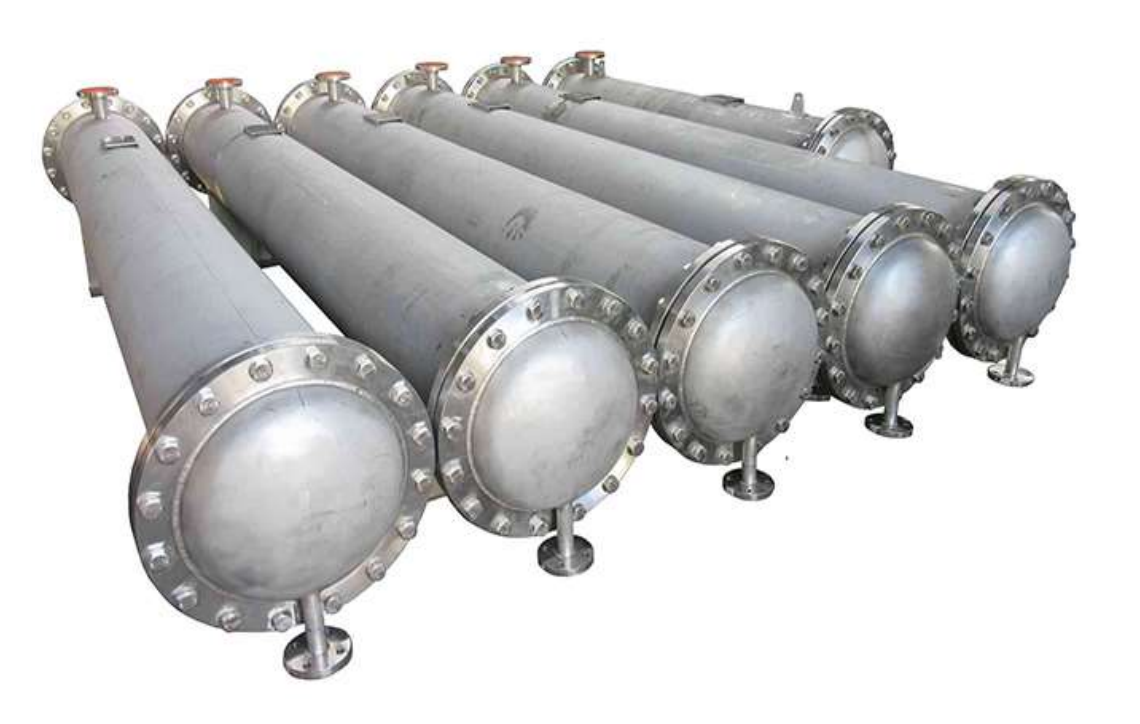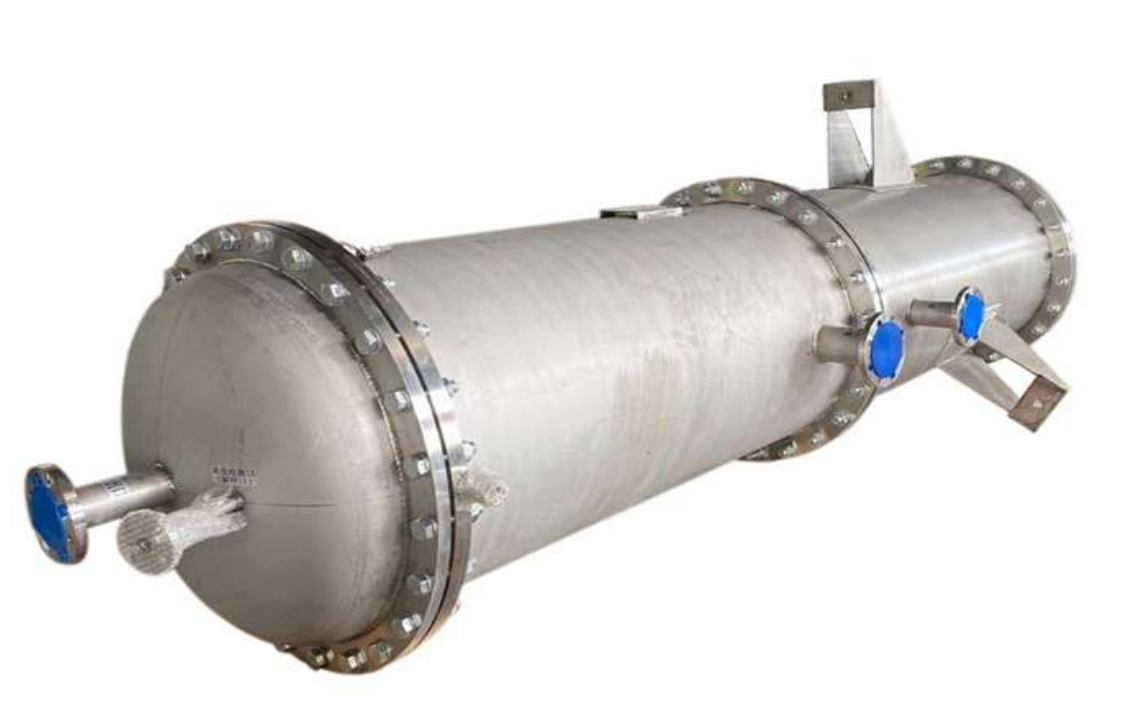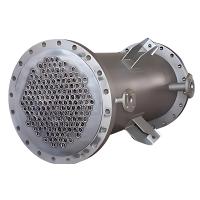Customizable stainless steel shell and tube heat exchangers
Shell and tube heat exchangers are widely used in chemical,
pharmaceutical, food and beverage, alcohol production,
refrigeration, civil and other processes. They are mainly composed
of shell, tube sheet, heat exchange tube, head, baffle, etc. The
required materials can be made of ordinary carbon steel, copper, or
stainless steel. During heat exchange, one fluid enters from the
connecting pipe of the head, flows in the tube, and flows out from
the outlet pipe at the other end of the head. This is called the
tube side; the other fluid enters from the shell pipe and flows out
from another pipe on the shell. This is called the shell side shell
and tube heat exchanger.

Product classification and characteristics
Fixed tube sheet heat exchanger
The structure of the fixed tube sheet heat exchanger is relatively
simple, compact and cheap, but the outside of the tube cannot be
mechanically cleaned.
The tube bundle of the fixed tube sheet heat exchanger is connected
to the tube sheet, which is welded to the two ends of the shell and
connected to the top cover. The top cover and the shell are
equipped with fluid inlet and outlet pipes. Usually, a series of
baffles perpendicular to the tube bundle are installed outside the
tube. At the same time, the connection between the tube and the
tube sheet and the shell is rigid, and the inside and outside of
the tube are two fluids with different temperatures. Therefore,
when the temperature difference between the tube wall and the shell
wall is large, due to the different thermal expansion of the two, a
large temperature difference stress is generated, so that the tube
is twisted or the tube is loosened from the tube sheet, which even
destroys the heat exchanger. In order to overcome the temperature
difference stress, a temperature difference compensation device
must be provided. Generally, when the temperature difference
between the tube wall and the shell wall is more than 60℃, for
safety reasons, the heat exchanger should have a temperature
difference compensation device. However, the compensation device
(expansion joint) can only be used when the temperature difference
between the shell wall and the tube wall is less than 60~70℃ and
the shell-side fluid pressure is not high. Generally, when the
shell-side pressure exceeds 0.6mpa, the compensation ring is too
thick and difficult to expand and contract, and loses the function
of temperature difference compensation, so other structures should
be considered.

Floating head heat exchanger
One tube sheet of the heat exchanger is connected to the shell with
a flange, and the other tube sheet is not connected to the shell,
so that the tube can expand and contract freely when heated or
cooled, but a top cover is connected to this tube sheet, called a
"floating head", so this heat exchanger is called a floating head
heat exchanger. Its advantages are: the tube bundle can be pulled
out for cleaning; the expansion of the tube bundle remains
unchanged and is constrained by the shell, so when the temperature
difference between the two heat exchanger media is large, no
temperature difference stress will be generated due to the
different thermal expansion of the tube bundle and the shell. Its
disadvantages are complex structure and high cost.

U-tube heat exchanger
In a U-tube heat exchanger, each tube is bent into a U shape, and
both ends are fixed on the same tube sheet. Each tube can be freely
expanded and contracted, thus solving the problem of heat
compensation. The tube pass is at least two passes, the tube bundle
can be pulled out for cleaning, and the tube can expand freely. Its
disadvantages are that it is difficult to clean the inner wall of
the tube, it is difficult to replace the tube, and there are few
tubes arranged on the tube sheet. The advantages are simple
structure, light weight, and suitable for high temperature and high
pressure conditions. In order to increase the flow rate of the
shell-side fluid, a certain number of baffles perpendicular to the
tube bundle are often installed in the shell. The baffle can not
only prevent the fluid from short-circuiting and increase the flow
rate of the fluid, but also force the fluid to cross-flow through
the tube bundle multiple times according to the specified path,
greatly increasing the degree of turbulence.
Commonly used baffles are round and disc-shaped, and the former is
more commonly used.

Equipment selection
Basic parameters of shell and tube heat exchanger
















